| |
|
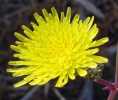 | |
| MaltaWildPlants.com by Stephen Mifsud |

|
| |
|
|
 |  |  |  |
| External Links: |
|
Limbarda crithmoides (Golden Samphire) |

Limbarda crithmoides (ASTERACEAE.)
Images for this profile are taken from the Maltese Islands after year 2000. |
|
| Nomenclature |
Species name : | Limbarda crithmoides (L.) Dumort. | Authority : | Carl von Linne, Sweden, (1707 - 1778) ;
Barthelemy Charles Joseph Dumortier, Belgium, (1797 - 1878) | Synonyms :
(basionym or principal syn.) |
|
Plant Family : | Asteraceae Bercht. & J.Presl (= Compositae )
(Daisy or Sunflower Family) | English name(s) : | Golden Samphire | Maltese name(s) : | Xorbett, Xorbebb | Status for Malta : | Indigenous. Present on the Maltese islands before man | Name Derivation : |
Limbarda: Adanson, the author of this genus, has named the plant after Limbardie a place in France from where the species was first described. ( ); 2 = Adanson, the author of this small genus, has named the plant after the vernicular name ' Limbarde' called so in some parts of France; from where the species was first described (Latin).
crithmoides: Resembling the plants of the genus Crithmum, or specifically Crithmum maritimum (Fam. Apiaceae) for having similar leaves because the flowers are then completely different. (Latin origin ); 2 = Resembling the genus Crithmum, or precisely the plant Crithmum maritimum (Fam. Apiaceae) - the Rock Samphire. The resemblance is based on the leaves becasue the flowers of the rock samphire are completely different. (Latin).
| Remarks : | |
|
| Morphology and structure |
PLANT STRUCTURE: |
Character | Growth Form | Branching | Surface |
Description | | | |
General
Picture |  |  |  |
|
LEAVES: |
Character | Arrangement | Attachment | Venation |
Description | | | |
General
Picture |  |  |  |
| |
Character | Leaf Shape | Leaf Margin | Remarks |
Description | | | Succulent: A plant having fleshy stems or leaves, often adapted to conserve water in an extremely dry habitat (xeric habitat). |
General
Picture |  |  |  |
|
FLOWERS: |
Character | Colour | Basic Flower Type | No. of Petals | No. of Sepals |
Description | Golden Yellow | | 12-18 Referring to the ray florets. | 30-40 Referring to the phyllaries of the involucre. |
General
Picture | | 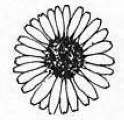 |  |  |
| |
Character | Inflorescence | Description | Ovary | Stamens |
Description | | Each flower head consists of a 12-16 yellow, strap-like spreading, non-overlapping petals (ray florets) with numerous yellow disc florets at the centre possessing yolk-yellow anthers. The flower is held in a green, cylindrical to semi-spherical involucre. | | |
General
Picture |  |  | 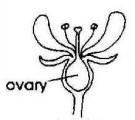 | 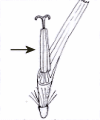 |
| |
Character | Scent | Average Flower Size | Pollen Colour | Other Notes |
Description | YES A sweet/aromatic smell. | 13-18mm | Yellow | - |
|
SEEDS: |
Character | No. Per Fruit | Shape | Size | Colour |
Description | 60-80 Seeds closely packed on a common receptacle. | | 1-2mm (excluding pappus). | Light Brown (Pappus is beige). |
General
Picture |  |  |  |  |
|
FRUIT AND OTHER BOTANICAL DATA: |
Character | Fruit Type | Colour of Fruit | Subterranean Parts | Other Notes |
Description | | Beige (Referring to the pappi of the collective fruit head). | | Aromatic Most of the plant (especially the leaves) have an aromatic scent. |
General
Picture | 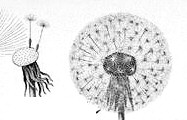 |  |  |  |
|
|
| Plant description and characters | |
Life Cycle: | Perennial. |
Growth Form: | CHAMEOPHYTE (dwarf or small woody shrubs) |
Habitat: | Rocky places near the coast, though it can be found a few km inland too. |
Frequency: | Common |
Localities in Malta: | Very Common at rocky coastal areas around Malta and Gozo especially near Globigerina Limestone. Few examples include Valletta, Pembroke, Bugibba, Dingli, Mellieha, Dwejra, Xlendi, Hondoq ir-Rummien and M'Forn. |
Plant Height: | 30-100cm. |
| Jul-Oct |
Protection in Malta: | Not legally protected till the last update of this website (2/Mar/2022) |
Red List 1989: | Not listed in the Red Data Book of the Maltese Islands |
Poison: | |
Inula crithmoides is a small or low-growing shrubby plant forming many leafy branches. Although specimens are often less than 1.5 metre accross in size, larger exceptional specimens can be found. Only few mature branches are found to sub-branch at the upper parts into much smaller branches. The stems are glabrous and can turn woody with time.
Leaves are numerous and often seen curved upright to take a vertically erect position. They are sessile and arranged alternatively along stem. New leaflets grow in small clusters form the axil of some mature leaves. Each leaf is glabrous, linear-succulent (finger-like shape) and possess smooth outline. Some specimens have more flattened but still fleshy leaves with 3 tiny teeth at their tip. Mature leaves measure about 45mm in length and 2-4 mm in diameter. Leaves have an aromatic-salty taste.
Flowers are produced in loose clusters mostly along the upper half of the branch, but the first flowers to develop are always present at the tip of the branch, with new flowers developing progressively downwards along the branch.
Each flower is made up of a green, semi-spherical or rather cylindrical involucre made up of numerous tiny, flap-like phyllaries tiled over each other (imbricated). Each phyllary is completely green, pointed at the apex and glabrous. The corolla usually consists between 12-18, bright yellow ray florets or 'petals' that are strap-shaped and have 3 teeth tiny teeth at the tip. The number of petals is quite variable. At the centre of the flower lies the disc florets (each about 1-2mm in size) which have a 5-lobed corolla, from which yolk-yellow stamens fused around a common style protrudes out. The style splits in two conspicuous dull-yellow stigmas at the top. Disc-florets develop from the periphery to the centre of the capitulum. Flowers have a semi-sweet/aromatic scent.
The flower matures in a fruit which initially is enclosed in the involucre, but when ripe, the involucral phyllaries spread out open exposing the numerous ripe achenes (seeds) on the receptacle. Achenes are 5mm long and consists of a 2mm linear, light-brown seed coveryed with tiny stiff hair and a bristly, light brown, unbeaked pappus. The bristles of the pappus are simple (unbranched) and about 3-4mm long. Seeds are dispersed to considerable distances by wind.
Being a (semi-)succulent plant, Inula crithmoides grows well in the arid conditions of Summer in Malta and can withstand salt (halophyte). As a result it is especially found along many rocky coasts in the Maltese Islands. Since it produces numerous flowers in Summer and Autumn, it is beneficial to several insects (bees/wasps/butterflies) since during this period many wild plants are dormant and not in flower.
|
|
| Information, uses and other details |
Nativity and Distribution
Found in almost all coasts lining the mediterrenean and also in Great Britain. up to Essex - almost at the northernmost range of its
distribution (there are a few plants in Suffolk) [336] .
Inula and its connection with Helen of Troy (Mythology)
Inula is allegedly connected with Helen of Troy who, it is said, held a bunch of Inula helenium when she was abducted by Paris. [WWW-101] . Helen of Troy had a large arm full of these flowers when Paris stole her from her husband Menelaus that started the Trojan War that lasted ten years. When Paris was killed Helen returned to Menelaus and through difficulty they returned to Sparta where they lived happily ever after. [WWW-100] Its Latin name means Helen where "inula" is being thought to be a corruption of Helenula - "little Helen". [WWW-101]
Another derivative of the genus name is also connected to Helen of Troy. Her tears watered and let to grow the plant Inula helenium. [WWW-56]
Reference [WWW-101] gives several other examples from where Inula could be derived. Inula, the Latin classical name for the plant, is considered to be a corruption of the Greek word Helenion which in its Latinised form, Helenium, is also now applied to the same species. There are many fables about the origin of this name. Gerard tells us: 'It took the name Helenium of Helena, wife of Menelaus, who had her hands full of its flowers when Paris stole her away into Phrygia.' Another legend states that it sprang from her tears: another that Helen first used it against venomous bites; a fourth, that it took the name from the island Helena, where the best plants grew. [WWW-03]
Medicinal Uses
The roots are claimed to have medicinal properties as a tonic [337]
Edible Uses
Young leaves are eaten raw or cooked [61, 105, 177] . They are occasionally used as a potherb [183] . The fleshy leaves and young shoots are pickled and used as a relish in salads etc [2, 66, 115, 183] . They are sometimes used as an adulterant of the true sea samphire, Crithmum maritimum [183] . The plant is traditionally consumed in Lebanon [337]
Throughout Europe, the flower buds were pickled and sometimes mixed with Salicornia. In Lebanon, the young succulent leaves are eaten raw in salads, cooked or used as a potherb. With good protein content (13%) (12.7% according to reference [337]), it has good potential as a quality animal feed supplement. When used as fodder, many of these succulents must be processed or leached in order to compensate for high levels of salt in their tissue. [WWW-102] . This plant is a high-Iodine vegetable where Iodine levels ranged between 0.8 and 1.4 mg/kg on Dry Weight basis. [337]
Cultivation and Propagation details
Succeeds in an ordinary garden soil in a sunny position [1] . One report says that the plant dislikes shade whilst another says that it succeeds in a shady border [37] . The plant needs to be watered frequently and given some salt occasionally [37] .
Propagation from seed is done by sowing in spring or autumn in a cold frame. When they are large enough to handle, prick the seedlings out into individual pots and plant them out in the summer. If sufficient seed is available, it is worthwhile trying a sowing in situ in the spring or the autumn. [KF]
Saline properties
Inula crithmoides is an iodine-rich herb commonly found in the salt marshes and coastal regions of Europe. When evaluated for use in biosaline agriculture, its germination and growth were relatively unrestricted in salinity regimes under 20 dS/m, with some populations withstanding up to 56 dS/m. [WWW-102]
Suitibility of Inula crithmoides in saline agriculture.
Inula crithmoides, a common halophyte from the coast of Lebanon, was evaluated for use in saline agriculture. Inula crithmoides offshoots were collected from the wild and propagated in a controlled environment. Germination and rooting tests under various salinity regimes ranging from 0.5 to 80 dS m-1 (NaCl) demonstrated a severe restriction of germination above 20 dS m-1 and indicated that vegetative propagation is probably the main reproduction strategy in saline environments. The growth of potted plants grown under 5 levels of salinity for a period of 87 days was only affected by salinity exceeding 20 dS m-1. Yield of plants irrigated with 40 dS m-1 saline water was nearly half that of the no-salt control. Mean yield value for plants grown at 20 dS m-1 reached 18.3 g dry weight (DW) per plant. At this salinity, crude protein content averaged 12.7% mg kg-1, and shoot iodine contents ranged between 0.8 and 1.4 mg kg-1 DW, making I. crithmoides a good-quality fodder, and an iodine-rich vegetable. This species also exhibited ionic relations typical of halophytes, with shoot K/Na ranging between 0.1 and 0.4, indicating that it can substitute Na for K. It is concluded that Inula crithmoides can be a good candidate for use in saline agriculture, provided a selection process is initiated to identify high yielding varieties. [337]
The suitability of Inula crithmoides L. as a coastal zone indicator in the Island of Gozo
Inula crithmoides L. is a halophilic angiosperm that has been used to assess the extent of the coastal zone of the islands. The distribution of I. crithmoides was investigated using Point-Quarter Vegetation Sampling, and the resultant data was analysed using multivariate statistical techniques.
Results indicate that abundance and density of I. crithmoides are significantly greater close to the coast than in inland areas. The relative importance of I. crithmoides in the context of the communities in which it occurs also decreases with distance from the coast. Conclusions drawn from these results justified the suitability of the use of I. crithmoides as a coastal zone indicator for a number of reasons, namely: its concentration around the coast, its abundance, and for the fact that it is easily identifiable. [335]
Personal Observations
Variation of the plant
Two small morphological variations were observed after studying several specimens of Inula crithmoides in the Maltese Islands. One variation is present in the leaf tips and the other in the flower size and its number of ray florets. The upper part of the leaves are usually smooth, having an entire outline (finger-shaped) but some specimens were more flattened and ending with 3 tiny teeth (check image INUCR26-27 below).
Secondly, flowers of the Maltese specimens tend to be rather small but the plants usually have plentiful inflorescences. Even primary flowers are generally quite small bearing about 16-20 petals, while on observing photos of flowers of specimens from other parts of Europe (Italy Spain and UK) flowers are larger with more than 30 ray-florets (petals) and more disk florets. Click on the following examples:
{example 1 }
{example 2 }
{ example 3 }
{ example 4 }
This is not a conclusion that applies to all I. crithmoides plants in Malta but an observation which can further investigated. [SM]
|
|
| Links & Further literature
(0 papers) |

Google Web |

Google Images |

Google Scholar |

Research Gate |

Wikipedia |

JSTOR |

GBIF |

Med Checklist |

Cat. of Life |

EoL |

IPNI |

World Flora Online |

Plants of the World Online |

Vienna Virt. Herb. |

RBGE Herbarium |

KEW Herbarium |

MNHN |

Arkive |

IUCN |

CABI |
Kindly Email if there are papers and publications about local
studies or information about this species to be included in the list above.
|
| Photo Gallery (48 Images) |  |
 |
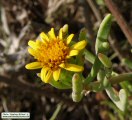 |
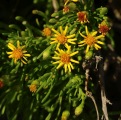 |
IMAGE: LMBCR-01 Photo of a flower consisting of 12-18 bright yellow, peripheral ray florets ('petals') and numerous yolk-yellow disk florets at the centre. |
IMAGE: LMBCR-02 Photo of flower showing detail of the tiny disk-florets. |
IMAGE: LMBCR-03 Photo of flower and finger-like leaves. |
IMAGE: LMBCR-04 Photo of composite flower with strap-shaped 'petals' (ray-florets) each having their tips with 3 minute teeth. |
 |
 |
 |
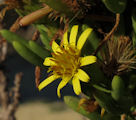 |
IMAGE: LMBCR-05 Photo of mature corolla in situ. Often flowers show up with unsymmetrical petals where some are shorter from other petals, not evenly spaced, or overlapping each other. |
IMAGE: LMBCR-06 Photo of a lateral view of the flower. |
IMAGE: LMBCR-07 Close up photo of flower showing details of the disk florets. Each floret is a tube with a star-shaped opening from which a single style protrudes out. The tip of the style splits in 2 stigmas while around its column there are the 5, fused stamens. |
IMAGE: LMBCR-08 Photo of flower taken in November 2010 at Dahlet Qorrot, Gozo. |
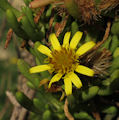 |
 |
 |
 |
IMAGE: LMBCR-09 Close-up photo of flower with young disc florets. |
IMAGE: LMBCR-10 Close-up photo of flower with mature/old disc florets. |
IMAGE: LMBCR-11 Photo of flower and leaves growing on a rocky ground. |
IMAGE: LMBCR-12 Photo of a flowering branch showing the numerous leaves and arrangement of flowers. |
 |
 |
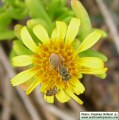 |
 |
IMAGE: LMBCR-13 Another photo showing a flowering branch with plenty of golden flowers in small loose clusters along the length of the branch. |
IMAGE: LMBCR-14 Photos of flowers along one of the many branches that this species forms. Taken at the end of August, 2005. |
IMAGE: LMBCR-15 Insects frequently visit the numerous flowers produced by this plant in Summer. |
IMAGE: LMBCR-16 Side view photo of flower and fruit. |
 |
 |
 |
 |
IMAGE: LMBCR-17 Scanned image of a flower (side view). The flower consists of a cylindrical to semi-spherical involucre (about 6mm long) made of several, tiny, flap-like structures called phyllaries. Phyllaries are pale green and have a pointed end. |
IMAGE: LMBCR-18 Scanned image of 4 flowers. Number of petals (ray florets) vary between 12 to 16 per corolla and they are not always perfectly symmetrical. |
IMAGE: LMBCR-19 Magnified scanned image of a typical, young flower. One can count the number of ray florets (15) and disc florets (about 43 : 15 open, 28 buds). Both ray and disk florets are capable to produce a seed. |
IMAGE: LMBCR-20 Scanned and annotated image of a dissected flower. Note that ray florets do not have stamens around their style. |
 |
 |
 |
 |
IMAGE: LMBCR-21 Photo a some branches showing their numerous erect, leaves. |
IMAGE: LMBCR-22 Close up photo of leaves. They are cylindrical (rarely also flattened), glabrous and have an entire outline, although sometimes they have 3 small teeth at their tip. |
IMAGE: LMBCR-23 Photo of a branch with crowded leaves that turn up to a vertically (erect) position. |
IMAGE: LMBCR-24 Photo of a leaf that appears to be glowing light-green with sunlight coming from opposite direction. One can also see several buds along the branch. |
 |
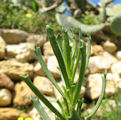 |
 |
 |
IMAGE: LMBCR-25 Photo of plant in Winter when it is found just in leaves. |
IMAGE: LMBCR-26 Photo of leaves that are flattened and have 3 teeth at the terminal part. |
IMAGE: LMBCR-27 Close up photo of a leaf. Most of the leaves have a finger-like structure, but few specimens have a more flattened leaf with 3 small teeth-like lobes at the apex. |
IMAGE: LMBCR-28 Photo of plant in its vegetative state (without flowers) in late Winter. |
 |
 |
 |
 |
IMAGE: LMBCR-29 Scanned image of a part of branch showing the arrangement and new growth of leaves. They are sessile, arranged alternatively along the stem with new leaves growing from the axils of mature leaves (indicated by arrow). |
IMAGE: LMBCR-30 Scanned image of some leaves. Glabrous, fleshy and have a linear shape and with a tendency of having a slightly broadened upper part. Some leaves have 3 small teeth at their tip. |
IMAGE: LMBCR-31 Scanned image of a whole branch. Leaves growing at the underside shrivel and die. One can also note small sub-branches with flowers growing up from the the branch. |
IMAGE: LMBCR-32 Scanned image of a flowering part of a branch. Apical flower opens first with lower buds following. |
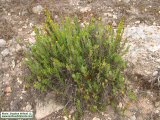 |
 |
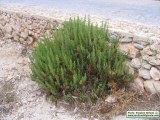 |
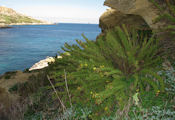 |
IMAGE: LMBCR-33 Photo of a flowering plant taken at Fawwara. (Aug 05). |
IMAGE: LMBCR-34 Photo of a large specimen at Dahlet Qorrot, Gozo (Nov 09). |
IMAGE: LMBCR-35 Photo of a large plant and it numerous branches, forming a shrub. Plant was about 80cm long and can grow up to 100cm. |
IMAGE: LMBCR-36 Photo of plant in its natural habitat - coastal areas especially rich in lime such as with Globiregina Limestone. |
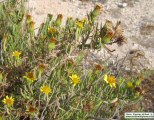 |
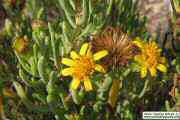 |
 |
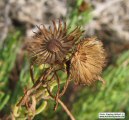 |
IMAGE: LMBCR-37 Photo of several golden-yellow flowers and brown-topped developing fruit. A mature fruit can be seen at the tip of the branch. |
IMAGE: LMBCR-38 Photo of 2 flowers and a fruit in between. |
IMAGE: LMBCR-39 Photo of fruit. On the left is a developing fruit, while next to it is a fully developed fruit (involucre spread out) with a number of achenes ready to be blown by wind and dispersed away. |
IMAGE: LMBCR-40 Close up photo of fruit showing detail of the receptacle (on the left) and of the achenes (right) which consist of a light-brown seed with a bristly pappus having a beige colour. |
 |
 |
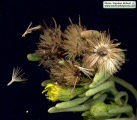 |
 |
IMAGE: LMBCR-41 Close up photo of fruit with some achenes waiting their turn to be dispersed by wind. Note that the phyllaries, which previously were forming the green cylindrical involucre, will spread out flat when fruit is fully mature. |
IMAGE: LMBCR-42 Photo of fruits which have exposed achenes (seeds) with a grayish-brown pappi. |
IMAGE: LMBCR-43 Scanned image of fruit. |
IMAGE: LMBCR-44 Scanned image of fruit and some of its achenes which are about 5mm long (2mm seed, 3mm pappus). |
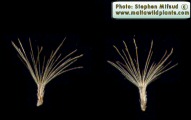 |
 |
 |
 |
IMAGE: LMBCR-45 Magnified scanned image of achenes consisting of a small light brown linear hairy seed and a beakless, bristly, unbranched pappus of a lighter brown colour. |
IMAGE: LMBCR-46 Magnified image of achene under the light microscope showing clearly hairs on the seed. |
IMAGE: LMBCR-47 Photo showing the coastal habitat of Inula crithmoides in Malta. |
IMAGE: LMBCR-48 Black and white illustration from: Illustrations of the Britisch Flora (1924), published on a website by Kurt Stueber. |
|
| | |

